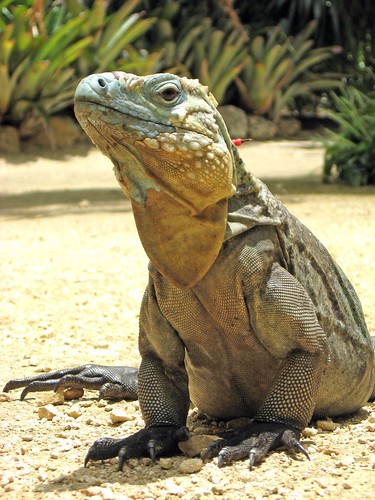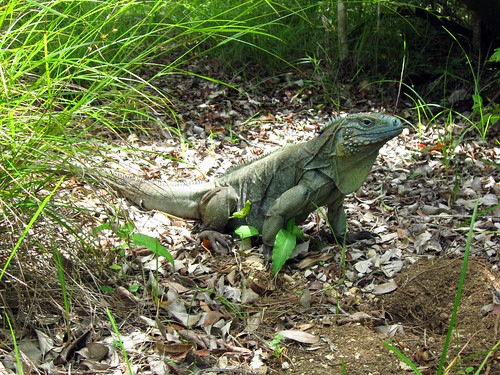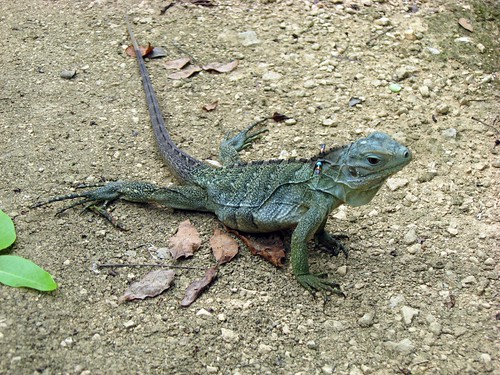I want to start our return/reintroduction/rewilding re-return week with a positive fable, a success story if you will. I've posted before about the Caribbean's Cyclura genus iguanas and the dangers they face. They also offer us examples of conservation successes and today I'm going to introduce you to another member of the genus, Cyclura lewisi. Cyclura lewisi is Grand Cayman's Blue iguana - it is endemic to Grand Cayman - the two other islands in the group have their own Cyclura, a subspecies of Cuba's Cyclura nubilis. C. lewisi gets up to five feet long and as its name would suggest can be a pretty bright blue.
Of course merely breeding lots of iguanas in captivity was only half the battle. It became necesssary to find suitable habitat to put them in. Releases started in the Queen Elizabeth II Botanic Park, a 65-acre park mixing natural habitats and cultivated gardens. Since 1996 small numbers of Blue Iguanas have been released annually into QE2 Botanic Park and breeding has taken place there since 1999 with the population starting to expand outside the Park itself.
With the Botanic Park population doing well, the Salina Reserve, a 625-acre nature reserve in Eastern Grand Cayman which is owned and protected by the Cayman National Trust and releases continue there.
I visited the botanic park in June and recommend it to anyone visiting Cayman - we saw about 25 of these wonderful animals together with an array of other interesting animals and plants.



No comments:
Post a Comment